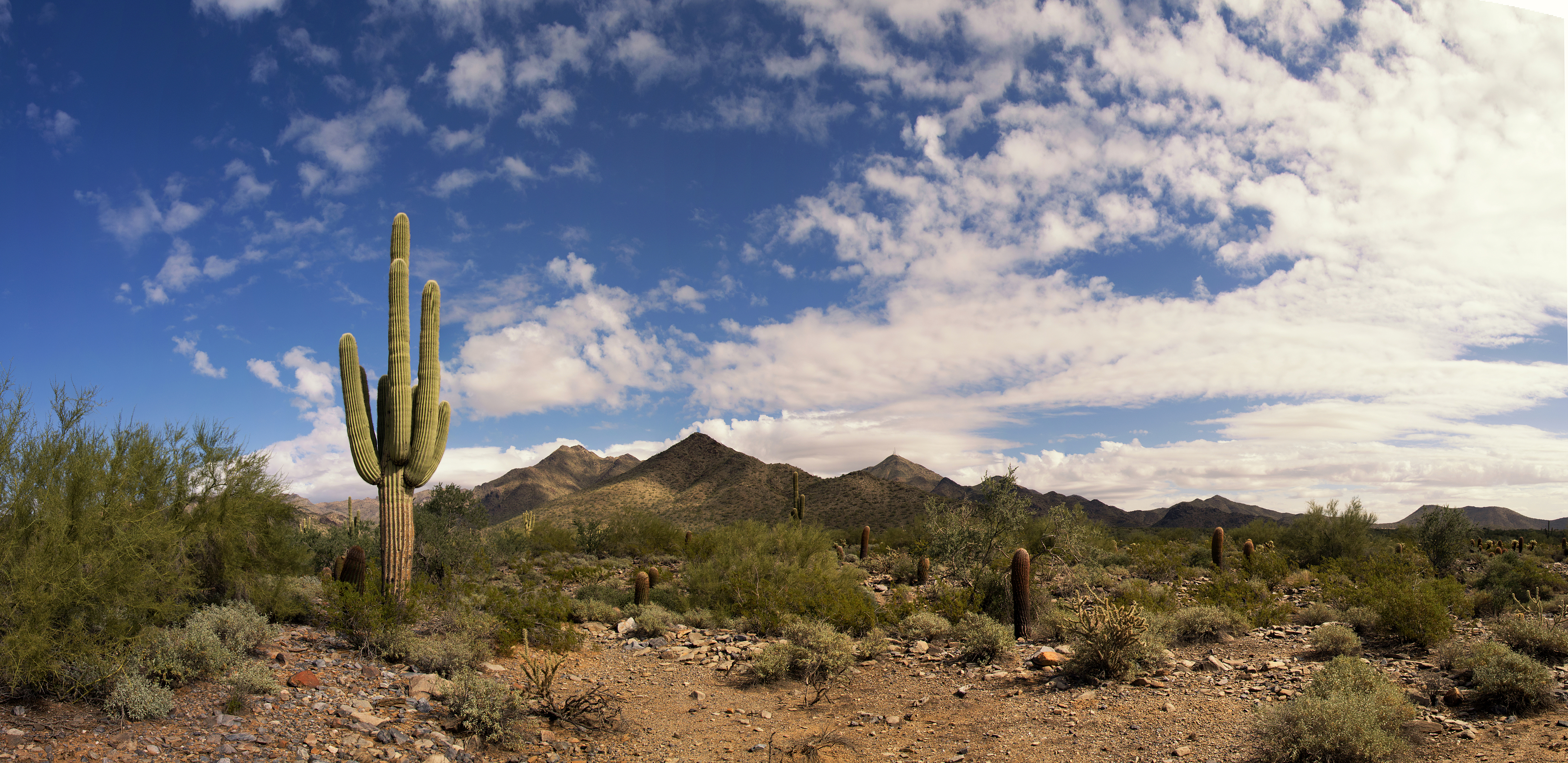Cactus Highway Blooms with Color this Spring

Rick Bowers is the kind of driver who keeps one eye on the road and one eye on the side of the road. He’s looking for clues, anything that will betray the hiding spots of his quarry.
“Sometimes they hide underneath desert brush,” said Bowers, a field ecologist whose name is on the cover of some 150 field guides. “Often you can see them 20 or 30 feet off the roadside.”
Other times they squeeze in the crevices of massive boulders or crouch among tall grasses of the Sonora desert.
What is Bowers’ target of prickly interest?
Cacti. Big, small, fat, wide—all of them spiny and fleshy and often indigenous to the Southern United States.
The Cactus Highway extends roughly 1500 miles from California through Texas along Highway 10. It begins at Joshua Tree National park and ends roughly at the Enchanted Rock State Park in Austin.
“Interstate 10 has the largest variety of Cacti in North America,” said Bowers, author of Cactus of Arizona and Cactus of Texas. “I’ve always been a desert rat and cacti have always been fascinating to me.”
Bowers grew up in a military family stationed near the high desert of Tucson. He’d spend summer days and evenings poking around the scrub brush and shooting photos.
His mother ignited the embers of his imagination by giving him a camera at age 7, and it never really left his side. He took it on family vacations, shouldered it on his bicycle and snapped candid portraits of anything that caught his increasingly keen eye.
The subject matter progressively turned to the natural environment. By the time Rick was in college at University of Arizona, Tucson, photography had become a full-time hobby.
Getting up at three or four in the morning, Bowers would knock on the dorm room doors of his friends and drive them to some remote spot in the desert or across the border to catch track and photograph migrating birds.
“There was a lot of grumbling,” Bowers remembered of his sleepy mates.
Two of the droopy companions would cram into the small cab of his wheezing, four-cylinder pickup. A third passenger would stretch out under the camper shell.
The payoff was worth the early wake-up call. Most of the good photo opportunities occurred just as the scarlet-caped sun surfaced over sparking desert sands.
Bowers collaborated on the cactus field guides with his wife, Nora. A cellular biologist he met at college, Nora carried the writing load while Bowers handled photography.
The publishing effort took about a year per book. The couple plotted locations of cactus and planned their journeys as the cacti flowered—an effort that was one part scheduling and two parts luck.
“We had a lot of fun doing it,” Bowers recalled. “We would do a little bit of off-roading here and there. But many varieties of cactus can be seen within 30 or 40 feet of the interstate.”
They would load up the family Sports Utility Vehicle with camera gear and old-fashioned field maps. The journeys to remote branches along the Cactus Highway lasted a week or two at a time. Their travels inspired them with the vastness and diversity of America’s desert wilderness.
Bowers may be a good spokesperson for talking with your auto service advisor before going on a road trip. During a visit to Big Bend National Park in Texas, he connected a trunk full of electronics equipment to a single power cord in the family SUV.
“It blew a fuse and we had to be towed,” Bowers recalled.
Bowers and his wife have driven nearly every inch of the Cactus Highway. They have identified quite a few spectacular destinations for novice and professional plant enthusiasts alike. Along the way you will travel through three massive desert environments—Mojave, Sonora and Chihuahuan.
Among them:
- Joshua Tree National Park, Calif. “Joshua Tree has a really good variety, probably a third of California cactus species,” Bowers said. The park is part of the Mojave Desert and features Silver Cholla blooms.
- Saguaro National Park, Ariz. Here you will see the spectacular Giant Saguaro Cactus, which can reach as high as 40 feet tall. You also can see the curious-looking Prickly Pear cactus and Cholla cactus. The park is situated in the high Sonora desert.
- Arizona-Sonora Desert Museum, Tucson, Ariz. Just 12 miles off the Cactus Highway, Bowers considers this site one of the premier national history museums in the World. One large section is devoted to desert cactus.
- Big Bend National Park, Texas. Bowers calls this park “cactus central for Texas.” It is home to a wide variety of cactus species including Dog Cholla Cactus and Pitaya Cactus. Located in the Chihuahuan Desert, Big Bend has more cactus variety than any other national park.
- Enchanted Rock State Park, Austin, Texas. Historical home of the Tonkawa Indians, native Texas cactus sprout from stunning pink rock formations.
Article by Jay Alling, editor of Sensible Driver. Write to jay@sensibledriver.com.